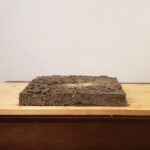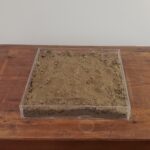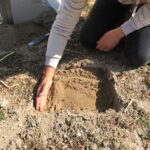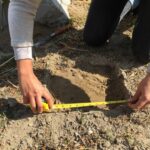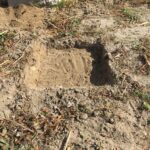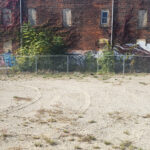One square-foot of Detroit soil removed from what once was a neighborhood called Black Bottom, the heart of African American life in Detroit. Its name referred to the color of its rich soil darkened by river sediments. Today, its dirt is sandy and gray. It’s mostly limestone: a reminder of Detroit’s various cycles of demolition and renovation; of land speculation and disinvestment. How much digging must I do to get to the black bottom? The possibility of reaching such historical grounds seems elusive.
In the ’50s Black Bottom was deemed a slum. Roaring bulldozers tore down the houses, the shops, the banks, the churches, the community clubs, the sacred places. Over them, an expanse of asphalt spread: highway I-375.
Speculation turns soil into land, acreage, property. On this site, the University of Michigan together with Dan Gilbert and Steven Ross will build a 300 million dollar Research Center, in hopes to bring to the city its final renewal.
One square foot of black bottom’s soil, reserved, preserved for thought. One square foot of Detroit soil, is today, a strange kind of ruin.
*The samples were taken on the boundaries of the new development. Fenced out and with 24hrs surveillance, I was not allowed inside.


